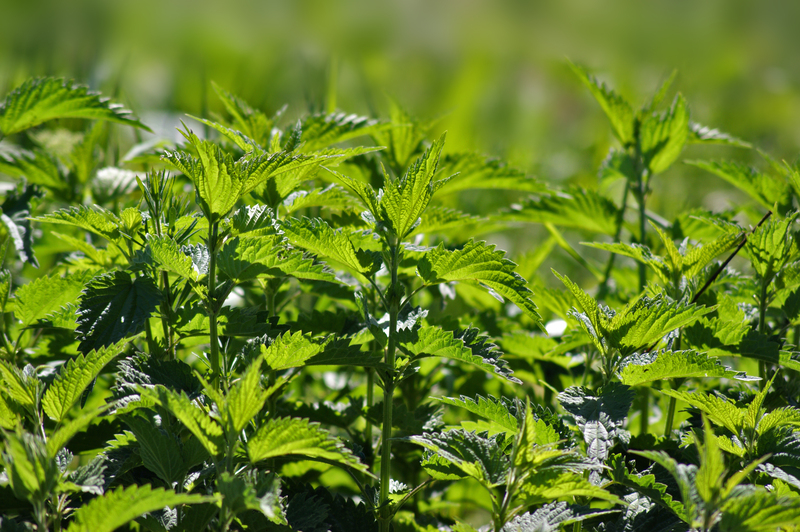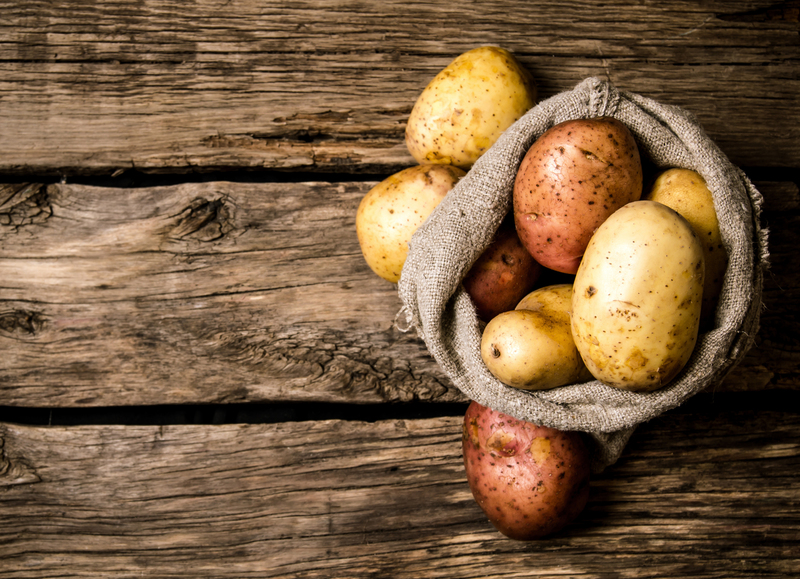Crafting a Flourishing Herb Garden in Simple Steps
Posted on 03/07/2025
Are you dreaming of stepping outside your door and picking fresh basil, mint, or thyme for your kitchen? Creating an herb garden isn't only achievable; it's also an endlessly rewarding and cost-effective way to enhance your culinary adventures and live more sustainably. Whether you have a vast yard or a sunny windowsill, this comprehensive guide will empower you to craft a flourishing herb garden in simple steps.
Why Grow Your Own Herbs?
There are myriad reasons to start your own herb garden--from the joy of fragrant leaves to the health benefits and flavors they infuse into your meals. Here's what you gain by growing herbs at home:
- Fresh Flavors: Herbs harvested right before use are bursting with aroma and essential oils.
- Cost Efficiency: Home-grown herbs are far cheaper than store-bought bunches that wilt quickly.
- Health Benefits: Many herbs have medicinal properties and immune-boosting antioxidants.
- Garden Beauty and Biodiversity: Herb gardens attract pollinators and add greenery to any space.
- Environmental Impact: Reduces packaging waste and pesticide use.

Planning Your Herb Garden: A Step-by-Step Blueprint
Before you get your hands dirty, successful herb garden planning is essential. Let's walk through each stage together, ensuring your garden thrives from the start.
Step 1: Choose the Perfect Location
Sunlight is key! Most culinary herbs love at least six hours of direct sun each day. Survey your space--be it a backyard, balcony, or window box--and pick a spot that gets ample light. South or west-facing areas are usually ideal.
If natural sunlight is limited, consider using grow lights placed overhead. In this way, simple herb gardening can succeed even indoors.
Step 2: Select Your Herbs Wisely
What do you crave most? Begin with herbs you use regularly in your kitchen and that grow well in your climate. Here are some beginner-friendly herbs:
- Basil: Perfect for Italian dishes, pesto, and salads.
- Chives: Add oniony flavor to soups, potatoes, and eggs.
- Mint: Great for teas, desserts, and cocktails.
- Rosemary: Fragrant and resilient, ideal for roasts and bread.
- Parsley: Versatile, nutrient-rich, and easy to grow.
- Thyme: Strong, subtle, and complements many savory dishes.
- Cilantro: Vital for salsa, guacamole, and curries.
Tip: Read seed packages or plant tags for special requirements. Some herbs, like mint, spread aggressively and are best contained in pots.
Step 3: Decide Between Containers and Garden Beds
Crafting a lush home herb garden doesn't require a massive yard. Herbs thrive in:
- Garden beds for those with outdoor space
- Raised beds for improved drainage and accessibility
- Pots and containers--perfect for balconies, patios, or window sills
- Vertical planters for maximizing small spaces
Ensure containers have drainage holes and are filled with high-quality potting soil. Herbs dislike soggy roots!
Step 4: Prepare the Soil
For a thriving herb garden, the soil should be:
- Well-draining: Amend clay soils with compost and sand.
- Rich in organic matter: Mix in compost or well-rotted manure.
- Neutral pH: Most herbs prefer a pH between 6.0 and 7.0. Home testing kits are widely available.
Pro Tip: If reusing old containers, disinfect them with a mild bleach solution and rinse well to prevent disease.
Step 5: Plant Your Herbs
You can start an herb garden from seeds or healthy nursery-grown plants. Here's how:
- Seeds: Start indoors in early spring, sowing 6-8 weeks before the last frost. Use seed trays or small pots.
- Transplants: Gently loosen roots, plant at the same depth as their nursery pots, and water deeply.
Planting distance matters. Give each herb adequate space for healthy airflow and root growth:
- Basil, parsley, cilantro: 8-12 inches apart
- Sage, rosemary: 18-24 inches
- Chives, thyme: 6-8 inches
Easy Care for a Flourishing Herb Garden
Watering the Right Way
Herbs prefer consistent but not excessive moisture. Here are some guidelines for maintaining a vibrant herb garden:
- Water deeply once or twice weekly rather than frequent light sprinklings.
- Check soil moisture by sticking your finger an inch deep--water if it feels dry.
- Morning is the best time for watering to prevent fungal diseases.
Feeding Your Herbs
Most herbs thrive in average soil, but occasional feeding enhances growth:
- Use a dilute organic fertilizer (like fish emulsion) once a month during active growth.
- Over-fertilizing can reduce flavor--less is more with herbs.
Pruning and Harvesting for Vigor
Regular harvesting encourages bushier growth and prolongs the productive life of your herb plants. Follow these golden rules:
- Pinch or snip herbs above a set of leaves for fuller regrowth.
- Avoid removing more than a third of any plant at one time.
- Constantly remove flower buds on annual herbs (like basil) to extend leaf production and enhance flavor.
Pest and Disease Management
A bonus of growing herbs at home is that most are naturally pest-resistant. Still, here's how to maintain a healthy herb garden:
- Inspect regularly for aphids, mites, and other pests.
- Rinse foliage occasionally and use insecticidal soap as a last resort.
- Provide spacing and airflow to prevent mildew and fungal diseases.
Expanding Your Herb Garden: Tips and Variations
Companion Planting for Success
Herbs play well with others. Interplanting herbs with vegetables like tomatoes, carrots, and cabbage naturally repels pests and enhances the whole garden's health. For instance, basil improves tomato flavor and repels insects, while chives deter carrot flies and aphids.
Embracing Perennial and Annual Herbs
Create a landscape that flourishes year after year:
- Perennial herbs: Thyme, rosemary, sage, oregano, mint, chives (these come back each year when protected from harsh winters).
- Annual/biennial herbs: Basil, cilantro, dill, parsley (replant each season or let them self-seed).
Creative Herb Garden Designs
Add style with unique layouts:
- Kitchen window boxes: Easy access for cooking, great for small spaces.
- Spiral herb gardens: Maximize space, drainage, and sun exposure in a beautiful raised pattern.
- Herb containers: Use teapots, crates, hanging baskets, or other upcycled items for an artistic touch.
- Compartmentalized beds: Group herbs with similar water and sun needs together.
Harvesting and Preserving Your Bounty
Harvest herbs in the morning after dew dries, when their essential oils are at their peak. For the best flavor, snip leaves frequently. If you end up with more than you can use, try these preservation tips:
- Drying: Bundle and hang upside-down in a dry, airy spot. Crumble and store in airtight containers.
- Freezing: Chop herbs, pack into ice cube trays with water or olive oil, and freeze for easy portions.
- Infusions: Add sprigs to oils, vinegars, or butters for long-lasting flavor enhancements.
*Preserve your herb harvest and enjoy the fresh taste throughout the year!*

Common Questions About Starting an Herb Garden
Can I Grow Herbs Indoors All Year?
Absolutely! Many herbs flourish indoors with sufficient light. Use a sunny windowsill or supplemental LED grow lights for year-round harvesting (winter herb gardening made easy).
What Are the Easiest Culinary Herbs for Beginners?
Basil, chives, mint, and parsley are the most forgiving and resilient for first-timers. Chives and mint especially tolerate some shade and irregular watering.
Can I Grow Herbs From Cuttings?
Yes! Many perennial herbs like rosemary, mint, and oregano root easily from stem cuttings in water or moist soil. This is a quick way to multiply your plant collection.
How Do I Prevent Herbs From Becoming Leggy?
Leggy growth is often a sign of insufficient light. Move your herbs closer to the sun or enhance with grow lights. Prune regularly to encourage bushiness.
How Often Should I Replant My Herb Garden?
Perennial herbs can last several years with proper care. Annuals (basil, cilantro) should be replanted each spring. Refresh pots with new soil and compost for continued vitality.
Conclusion: Savor the Simplicity of Crafting a Flourishing Herb Garden
Crafting a thriving herb garden is an enriching journey--one that connects you with nature, boosts your health, saves money, and fills your home with beauty and delightful fragrance. Whether you're a beginner sowing your first seeds or an experienced gardener expanding your herbal repertoire, these actionable, simple steps will guide you toward a flourishing herb garden all year round.
- Start small if you're new--one or two pots is enough to spark the gardening habit.
- Don't be afraid to experiment with herb varieties and garden designs.
- Enjoy the process--from planning and planting to harvesting and savoring the fruits (and leaves!) of your labor.
Now is the perfect time to start your own herb garden--fresh flavors, natural beauty, and the joy of growing are just a few simple steps away!

